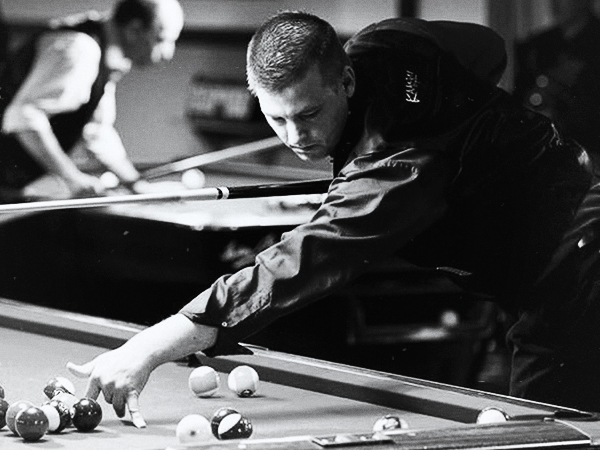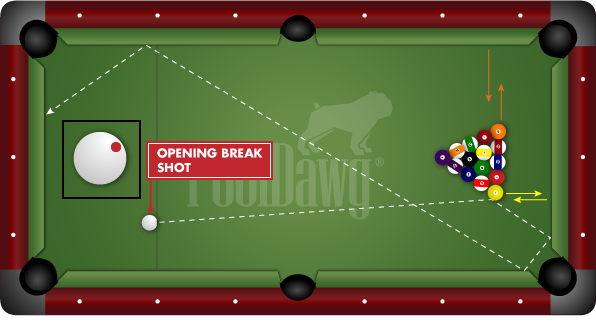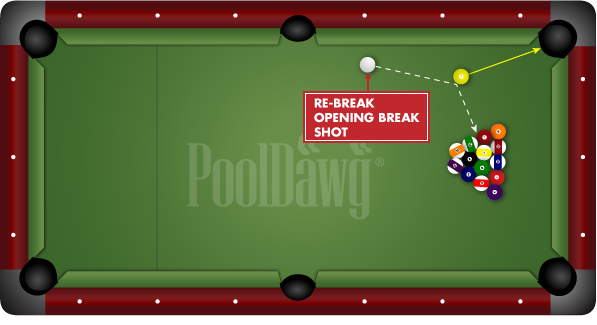
When you think of 14.1 the mind conjurs up images of the greats, Mosconi, Greenleaf, and Crane. Dreams of machine gun-like hundred ball runs, and fierce defensive battles taking place on the expansive green felted battlefield. This was THE game! This was 14.1!!
Many of you may have never played a game of 14.1 or Straight Pool as it is commonly referred to. Hopefully after reading this you will find yourself immersed in what many of the greats considered to be true and ultimate height of pocket billiards skill. Let's begin by going over some basics of the game.
14.1 is a call pocket game, where the players must call the ball and pocket only. You may shoot any ball you like, in any order that you like. Players receive one point per ball pocketed, and usually race to a designated score of 100-150 points (but you can choose any goal you like). Fouls in this game result in a loss of 1 point per penalty with a 15 point additional loss on 3 consecutive fouls. This is not a ball in hand game. When a player fouls the cue ball remains in position, unless the cue ball is pocketed or leaves the table, the incoming player may then place it anywhere behind the head string.

 Frank Says: "Phil Capelle literally wrote the book on Straight Pool. It's called Play Your Best Straight Pool and is a complete guide to 14.1 with over 500 pages of easy to digest training!"
Frank Says: "Phil Capelle literally wrote the book on Straight Pool. It's called Play Your Best Straight Pool and is a complete guide to 14.1 with over 500 pages of easy to digest training!"
Since this is a call shot game even the opening break is a defensive shot and must adhere to specific criteria. On the opening break shot, the player must drive two balls and the cue ball to a rail (see Figure A). Failing to do so results in a -2 point penalty, and the incoming player may accept the table and play the balls as they lie, or have the offending player re-break the opening break sequence.

As you begin picking your pattern and breaking apart the clusters on the table, you will reach a point where you may only have a few balls left on the table. This is a good time to begin deciding which ball will be your break ball (the last ball on the table) and which ball will be your key ball the second to last ball on the table). See Figure B. Once you have only one ball remaining, you will re-rack the other 14 (hence the name 14.1). Hopefully you have left a ball near the racking area so that you can easily pocket that ball and break up the rack. There are scenarios where the remaining balls (object ball & cue ball) are in the way of racking the balls; see Figure c for details.

Straight Pool is one of the greatest disciplines of pocket billiards. Playing this game will teach you many things: Pattern play, cluster management, soft spin shots, tight position play and smart defensive and strategic options. All of these qualities will help you perform at a higher level in both 8-ball and 9-ball. The pattern play and cluster management is ideal to improve your 8-ball game. The soft spins and subtle cue ball control will improve your 9-ball game by teaching you finesse and always obtaining the proper angles to move from shot to shot.
Hopefully you are now entranced in the hypnotic lure of the great game of 14.1. Don't forget to tune in and check out the live stream, or stop by in person and witness first hand, the some of the greatest practitioners of this time honored game at the World Tournament of 14.1, held August 4th-9th at Steinway Billiards Cafe. I will be participating in the prestigious event and will be reporting to the Pool Dawg readers about my first experience in the 74th annual World Championships.
Until next time, Mikey V.
- RELATED ARTICLES
- The 2014 World Tournament of 14.1 Experience - Day 1 – By Mikey Verkruyse
- Lesser Known Billiards Games – By Tom Simpson
- Lessons from the World Straight Pool Tournament – By Mark Finkelstein